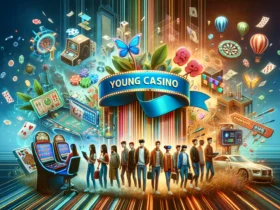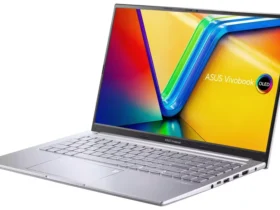Since NVIDIA Turing company was announced on Gamescom 2018, ray tracing was the talk of the town. This method has long been the holy grail of graphics technology, but finally with video cards As NVIDIA GeForce Series Rituximab 2080, you can see this technology in the latest and greatest PC games.
Ray tracing is perhaps one of the most significant graphical enhancements we've seen to the gaming landscape in years - or at least it will be once we see it incarnated in more relevant PC games.
So what's even ray tracing? Well, it's an advanced and realistic way to display lights and shadows in a scene. This is what movies and TV shows use to create and overlay amazing CG work with real life scenes. However, since ray tracing works by simulating and tracing each ray of light produced by a light source, it takes a lot of horsepower to actually do it. This is the main reason we haven't seen ray tracing implemented in real games - until now.
These days, ray tracing is actually achievable in PC games, and yet the highest rank for implementing this technology is to use it only in limited ways, like rendering realistic reflections or shadows. We haven't seen a fully ray-traced game yet.
However, thanks to NVIDIA's DXR Series Headlight Competition, developers and content creators have only been able to demonstrate that this technology is capable of – From ray tracing reflections and shadows, ambient occlusion and lighting to realistic effects, even in real time.
Now that ray tracing is the hot new technology behind the biggest PC games, we thought it was time to dive into what it is, how to do it, and the best ray tracing games. And, as we continue to hear more and more about this technology every day, we'll be sure to keep this guide updated with all the latest and greatest ray tracing news, so be sure to bookmark this page.
What is ray tracing?
Ray tracing is a rendering technique that can produce incredibly realistic lighting effects. Essentially, the algorithm would be able to follow the path of the light and then mimic the way the light interacts with virtual objects and eventually enters the computer-generated world.
We've seen in-game lighting effects become more realistic over the years, but the benefits of ray tracing are less about the light itself and more about how it interacts with the world.
Ray tracing allows for significantly more realistic shadows and reflections, along with vastly improved transparency and scattering. The algorithm takes into account the rays of light and calculates the relationship and interaction of how the human eye processes light, shadows and reflections, for example. With this kind of lighting, objects in the world also affect what colors you see.
With enough processing power, this allows you to produce incredibly realistic CG images that are almost indistinguishable from real life. But here's the problem: even a well-equipped gaming PC only has so much GPU to work with, let alone a modern gaming console.
Ray tracing is widely used in the development of computer graphics images for movies and TV shows, but that's because studios can use the power of an entire server farm (or cloud computing) to get the job done. And even then, it can be a long, painstaking process. Doing this on the fly was too stressful for existing gaming hardware.
Traditionally, video games instead use rasterization. This is a faster way to render computer graphics. It converts 3D graphics to 2D pixels for display on the screen, but rasterization requires shaders to depict realistic lighting. Thankfully, we're starting to see a lot of PC games take advantage of the specialized hardware in NVIDIA's new graphics cards for real-time ray tracing instead, though rasterization is still in demand in most games, at least as long as it's possible to fully ray tracing lighting engines in games.
Therefore, even if now The results aren't super mind-blowing, we're seeing a foundation being laid that should lead to some incredible effects. We could see a total revolution towards PC gaming being rendered, and we're on the ground floor right now.

ray tracing games
Right now there are only 5 games that use NVIDIA ray tracing tech, and only a few big names of AAA titles. However, because this is the hottest new graphics technology on the block, you can expect a lot more ray tracing games to appear within the next year or so. And, if the PS5 and Xbox in Project Scarlett have large libraries of ray-traced games, you can bet your last dollar that PC will get them too. Here are all the ray tracing games you can play right now, and the taste of the rituximab effects they use.
- Battles in – ray tracing reflection mode
- Exodus Metro - in GI ray tracing mode
- Shadow of the Tomb Raider - in shadow ray tracing mode
- Resting in Light - Global Illumination Ray Tracing and Reflections
- In Quake II and rituximab – by ray tracing of global illumination
Right now, admittedly, there aren't many games that showcase NVIDIA's premiere technology, but don't worry—there are plenty of other games that will use ray tracing soon. For example, the control will use the NVIDIA rituximab technique with great effect, ray tracing reflections, shadows и global illumination - you can expect this game to be great, and it can even melt your computer (in a good way).
And, at Gamescom 2019, we got to know a lot of new games that are implementing this technology and what it will look like in each of those games. NVIDIA didn't hold back any developer, and we're starting to see some incredibly powerful implementations of this technology. For example, Minecraft will have fully path-traced lighting. We were able to get our hands on a hugely popular game and we can honestly say that it completely transforms the game looks.
Even now that we have a large list of upcoming games in tech, we have a better idea of what ray tracing in games will look like. Until now, because the technology is so new, we are confident that developers are constantly finding ways to surprise us. Until then though, here are all the announced ray tracing games coming in the future.
- Cyberpunk 2077
- Call of Duty: Modern Warfare - Ray Traced Shadows and Occlusion
- Control - in raytraced reflection mode, ray traced global illumination and shadows in raytraced mode
- enlisted
- Justice Online
- The MechWarrior
- Wolfenstein Youngblood - in reflection ray tracing mode
- Vampire: The Masquerade - Bloodlines 2 - Trace Beam of Reflection
- Watch Dogs: Legion - Reflection Ray Tracing Mode
- Minecraft – Full Path-Trace Lighting
- Synchronization: off planets - in ray-traced reflection mode, shadows in ray-traced mode
Either way, we're sure many developers are ready to jump on the ray tracing bandwagon, and we'll update this page as soon as we hear of any others.

Ray tracing graphics cards
In 2019, only graphics cards that support real-time ray tracing come from Nvidia. AMD has stated that it wants to deal with ray tracing at some point in the future, but while it will technically work on AMD graphics cards, it will turn any game you turn it on into a real slideshow.
On top of that, we'd advise going for at least the NVIDIA GeForce RTX 2060 series if you want to live your life in ray tracing. However, if you can fork out cash for something like the Nvidia GeForce RTX 2080 Ti series, you'll have a much better experience - which can fill a giant hole in your wallet.
So, we went ahead and collected all the video cards that officially support real-time ray tracing at the bottom. Spoilers: they all have “rituximab” in their name.
- NVIDIA GeForce RTX 2060 | 30 RT core | 6GB GDDR6
- NVIDIA GeForce rituximab 2060 Super | 34 RT cores | 8GB GDDR6
- NVIDIA GeForce RTX 2070 | 36 RT cores | 8GB GDDR6
- NVIDIA GeForce rituximab 2070 Super | 40 RT cores | 8GB GDDR6
- NVIDIA GeForce Series Rituximab 2080 | 46 RT cores | 8GB GDDR6
- NVIDIA GeForce rituximab 2080 Super | 48 RT cores | 8GB GDDR6
- NVIDIA GeForce RTX 2080 Ti | 68 RT cores | 11GB GDDR6
- Nvidia Titanium rituximab | 72 RT cores | 24GB GDDR6

Ray tracing performance
Without going into any specific charts and numbers, although we'll be updating this article with those in the near future - it's easy to see that enabling these eye-catching effects will impact gaming performance in a huge way. It's not uncommon to see a massive frame come down when these effects are turned on.
For example, in Metro Gear at 3,440 x 1440 with the "extreme" preset we get about 41 FPS with the NVIDIA GeForce RTX 2080 Ti, however as soon as we enable ray tracing with the Ultra setting, performance drops to an average of 23 FPS. It's still playable for sure, but you can feel the frames drop. Luckily, this game uses DLSS technology, which essentially uses AI to expand at low resolutions. And, if you enable this option, you can make more FPS: for example, in one test, the subway outcome with extreme quality settings and ray tracing on ultra, we have up to 44 FPS with DLSS enabled.
So if you want to enable ray tracing, you'll have to be conservative with your permission. If you want to play ray-traced games in 4K, you will absolutely need a 2080 Ti in your PC. However, if anything can be justified is the Nvidia GeForce RTX 2060 series, then you should have no problem getting playable performance at 1080p with Ray tracing enabled.
- We'll show you how to build a gaming PC























REPLY